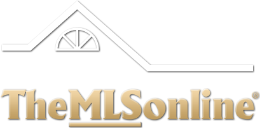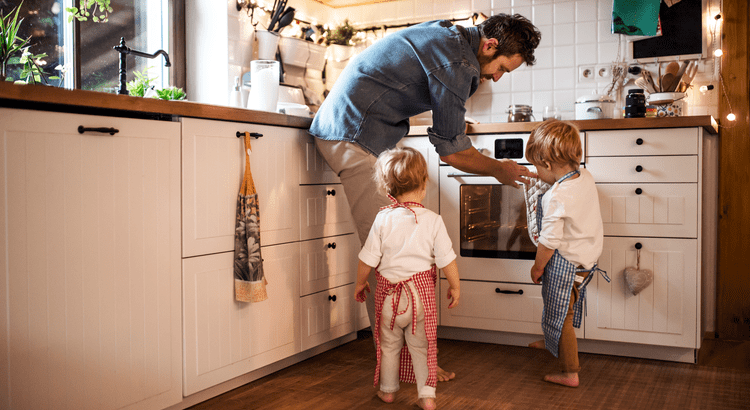When it comes to Minnesota’s home inspection checklist, there are seven key areas to focus on for ensuring your property is safe and functional. These include checking safety systems and detectors, evaluating the electrical system, assessing structural soundness, examining plumbing and water quality, testing HVAC functionality, inspecting the exterior and roof, and controlling for pests and moisture.
Inspectors will look at smoke alarms, carbon monoxide detectors, wiring, foundation integrity, plumbing fixtures, heating and cooling systems, roof condition, and signs of pest infestations or water damage.
They’ll also ensure everything meets state regulations, identify any potential hazards, and suggest necessary repairs or improvements. A thorough inspection of these areas can provide crucial insights into your property’s overall condition, helping you make informed decisions about maintenance or potential purchases.
If you’re considering selling your home, having a detailed inspection can really help in understanding what needs attention. At TheMLSonline, we’re here to guide you through every step of the selling process. Our expertise can help you make the most of your property and ensure a smooth transaction. Trust us to be your go-to real estate agent for selling your home!
Safety Systems and Detectors
Most Minnesota homes need essential safety devices to shield occupants from fire and carbon monoxide hazards. State regulations require smoke alarms in every bedroom, hallway, and on every level of the home, ensuring residents receive early fire warnings regardless of where they are in the house. Home inspections are crucial for confirming that these devices comply with state standards and function effectively.
Carbon monoxide detectors are also vital. They must be installed within 10 feet of each bedroom to protect against carbon monoxide poisoning. Proper placement of smoke alarms and carbon monoxide detectors is key to their effectiveness in emergencies.
Regular maintenance is a must. Homeowners should test smoke alarms monthly and replace batteries at least once a year. Carbon monoxide detectors also require routine checks to ensure they work correctly. Neglecting maintenance can lead to device failure and jeopardize safety.
Minnesota’s regulations also mandate documentation of installation locations and maintenance records for all safety detectors. This helps homeowners monitor the age and condition of their devices for timely replacements and upgrades.
During a home inspection, inspectors will assess the presence, placement, and functionality of these safety systems. They’ll verify that smoke alarms and carbon monoxide detectors are correctly installed and operational while reviewing maintenance records for compliance with state rules.
Electrical System Integrity
While safety systems guard against fire and gas dangers, a home’s electrical system demands equally thorough inspection to ensure occupant safety and mitigate potential risks. The electrical system is a vital part of any Minnesota home inspection checklist, revealing significant issues that could jeopardize the property’s safety and functionality. Understanding the importance of home inspections helps buyers grasp the need to address electrical concerns.
Inspectors must check that outlets are available in every room and securely mounted, ensuring safe and accessible electrical access throughout the home. Wiring should be concealed within walls or ceilings to prevent hazards and maintain aesthetic appeal. Junction boxes require proper coverage and secure installation to protect connections and avert electrical fires.
The use of extension cords and multi-plug adapters is not permitted, highlighting the necessity for permanent wiring solutions to prevent overloads and hazards. When power strips are used, they must feature over-current protection to shield against electrical surges and potential fires.
A detailed inspection of the electrical system can reveal issues like outdated wiring, improper installations, or insufficient capacity. These problems can result in electrical fires, shocks, or power outages if neglected. Inspectors should assess the main electrical panel, circuit breakers, and grounding systems to ensure compliance with current safety standards and local building codes.
Structural Soundness Assessment
The structural soundness assessment during a Minnesota home inspection zeroes in on three key areas: foundation integrity, wall and ceiling conditions, and roof structure. Inspectors check for signs of shifting or settling in the foundation, while walls and ceilings are scrutinized for cracks, bulges, or water damage that could signal structural concerns. This assessment is vital for ensuring a home’s safety and durability, as even minor issues can escalate into major problems if ignored.
A thorough inspection equips potential buyers to make informed investment decisions, highlighting the significance of home inspections in the buying process. The roof structure undergoes careful evaluation to ensure it can support the roof’s weight and withstand environmental stresses.
Foundation Integrity Evaluation
A foundation integrity evaluation is crucial for any comprehensive home inspection in Minnesota. Inspectors look for signs of shifting, like cracks in walls and uneven ceilings, which may signal structural issues. These indicators are essential for assessing the home’s overall foundation stability.
The inspection also considers how landscaping affects foundation integrity, with a focus on encroaching tree roots that can undermine stability. Moisture levels in crawl spaces and basements are scrutinized, as excessive moisture can foster mold growth and weaken foundation materials.
Inspectors assess the condition of foundation materials, noting any wear, damage, or deterioration in concrete. They also check for pest infestations that could compromise structural integrity. Evaluating foundation integrity is vital for ensuring a home’s safety and longevity in Minnesota. By identifying potential issues early, homeowners can tackle problems before they worsen, safeguarding their property and avoiding costly repairs down the line.
Wall and Ceiling Checks
Conducting wall and ceiling checks is crucial for assessing a home’s structural integrity in Minnesota. Inspectors closely inspect these areas for water damage signs, such as stains or discoloration, which could signal plumbing or roofing leaks. They evaluate cracks in walls and ceilings, considering factors like size, direction, and location, as these may indicate underlying structural issues.
The evaluation also includes checking the alignment of walls and ceilings. Bulges or uneven surfaces can suggest framing problems or settling, impacting the home’s stability. Inspectors ensure ceiling heights meet minimum livability standards, noting any significant deviations as safety concerns. They also examine visible surfaces like drywall and plaster for deterioration signs, including peeling paint, which can affect appearance and air quality.
These checks are vital for identifying potential issues that may threaten a home’s safety or structural integrity. By thoroughly assessing these elements, inspectors offer valuable insights into the property’s overall condition, helping prospective buyers make informed decisions about their investment in Minnesota’s real estate market.
Roof Structure Inspection
Minnesota’s roof structure inspection is a key part of home evaluations, focusing on the roof’s structural integrity. Inspectors assess for sagging and other signs of issues. They evaluate roofing materials like shingles and tiles for wear, damage, or missing sections that could affect waterproofing.
A comprehensive inspection also involves checking the ventilation system to ensure proper airflow, which helps prevent moisture buildup and mold. Inspectors look at the flashing around chimneys and vents for leaks or rust, as these are common water intrusion points.
Additionally, they evaluate the roof’s slope and drainage to ensure water is directed away from the structure, minimizing the risk of water damage and foundation problems. This thorough examination gives homeowners and potential buyers a clear understanding of the roof’s condition and highlights necessary repairs or maintenance to avoid future issues.
Plumbing and Water Quality
Ensuring a home’s plumbing system and water quality is vital during inspections in Minnesota. Home inspectors check plumbing fixtures, pipes, and water heaters for leaks, corrosion, and proper installation. This evaluation supports efficient water flow and helps prevent water damage. Additionally, understanding local trends can benefit buyers, as plumbing issues may impact a property’s value or appeal in the market.
Inspectors assess plumbing fixtures like sinks and toilets for adequate pressure and drainage. They also analyze water quality by looking for unusual odors, discoloration, or sediment. The condition of pipes, including copper and PVC, is scrutinized to identify risks linked to aging systems.
Water heaters are inspected for rust, leaks, and strange noises, indicating potential repairs or replacements. Proper ventilation and drainage in basements and crawl spaces are also examined to avoid moisture buildup and mold growth, which can compromise water quality.
Minnesota home inspectors focus on the plumbing system’s overall condition, identifying signs of improper installation or potential future issues. If they find any concerning elements related to water quality or plumbing integrity, they may suggest further testing by specialized professionals.
HVAC Functionality
A functional HVAC system is crucial for home comfort and energy efficiency, especially in Minnesota’s fluctuating climate. During a home inspection, the HVAC system is thoroughly evaluated to ensure it operates correctly and to pinpoint any needed repairs. Knowledgeable agents can help homeowners grasp the significance of maintaining an efficient system when selling a home.
Inspectors check heating and cooling units for proper operation, listening for odd noises and detecting unusual odors. They assess airflow from vents and inspect air filters, which should be clean and replaced regularly to uphold air quality and system efficiency.
The age and maintenance history of the HVAC system are essential during the inspection. Older units might need considerable repairs or replacements, affecting the home’s overall value. Inspectors review maintenance records to see if the system’s been well cared for.
Thermostat functionality is also a vital inspection component. A faulty thermostat can result in insufficient heating or cooling, leading to higher energy bills. Inspectors ensure thermostats are accurate and responsive for optimal performance.
Safety is a top priority in HVAC systems. Inspectors confirm compliance with safety standards, such as proper venting and leak prevention. They also check for adherence to local building codes and regulations.
A comprehensive HVAC inspection as part of a home inspection in Minnesota helps spot potential issues before they escalate. This proactive strategy enables homeowners to address necessary repairs quickly, ensuring a comfortable and energy-efficient living space year-round.
Exterior and Roofing Inspection
The exterior and roof of a home are its first line of defense against the elements, making inspections crucial in Minnesota’s home evaluation process. These inspections help potential buyers spot issues before sealing the deal. Exterior assessments focus on siding condition, looking for wood rot, cracks, or peeling paint that may signal moisture intrusion or structural problems.
Inspectors also check ground clearance to ensure siding materials are elevated properly, which helps prevent moisture buildup and pest infestations. Recognizing the significance of these inspections offers peace of mind about your investment.
Roof inspections are just as vital, as they reveal visible defects like missing shingles, leaks, or gutter damage. These aspects are crucial for avoiding water damage and ensuring the home’s integrity. Chimneys and skylights are scrutinized for structural integrity to ensure they don’t create safety hazards or allow moisture to enter.
Drainage systems around the property are analyzed to identify potential erosion or water pooling, which can compromise foundation stability over time. This comprehensive evaluation gives homeowners insight into their property’s current condition and helps them anticipate future maintenance needs.
Key areas of focus during exterior and roofing inspections include:
- Siding condition and moisture intrusion signs
- Roof integrity, including shingles, gutters, and leaks
- Chimney and skylight structural integrity
- Drainage systems and ground clearance
Pest and Moisture Control
Pest and moisture control are critical aspects of Minnesota home inspections, protecting properties from structural damage and health risks. Inspectors assess homes for signs of pest infestations, such as droppings, nests, and damage from termites and rodents that could weaken the building’s structure. Understanding the significance of these inspections is vital for homeowners navigating the local market.
Moisture control is crucial in Minnesota’s climate. Inspectors look for leaks, water stains, and mold growth in basements, attics, and around windows. These signs may indicate drainage or ventilation problems needing prompt attention. Evaluating grading and drainage systems is essential to prevent standing water around the foundation, which can attract pests and lead to moisture damage.
Homeowners should maintain gutters and downspouts to ensure proper water flow away from the property. This simple upkeep significantly reduces moisture buildup and potential pest issues. Regular inspections and maintenance of crawl spaces and attics are vital for pest and moisture control, as these often-overlooked areas can hide moisture problems that, if ignored, may invite pests and cause extensive damage over time.
Ensure a Thorough Home Inspection with These 7 Essential Items
The seven essential items on Minnesota’s home inspection checklist encompass crucial aspects of a property’s condition and safety, including safety systems, electrical systems, structural integrity, plumbing, HVAC functionality, exterior elements, and pest control. This comprehensive framework ensures that potential buyers can make well-informed decisions while aiding current homeowners in maintaining their properties effectively. By addressing these critical areas, the checklist plays a vital role in promoting safer and more valuable housing across Minnesota.
As the premier Minnesota Realtor, TheMLSonline is dedicated to assisting clients in navigating the complexities of home inspections and real estate. Our expertise in the local market ensures that we can provide tailored solutions to meet your needs. We are committed to empowering you with the information necessary to understand the importance of these inspection points.
Trust TheMLSonline to support you in achieving your real estate goals while enhancing your property investment decisions.








